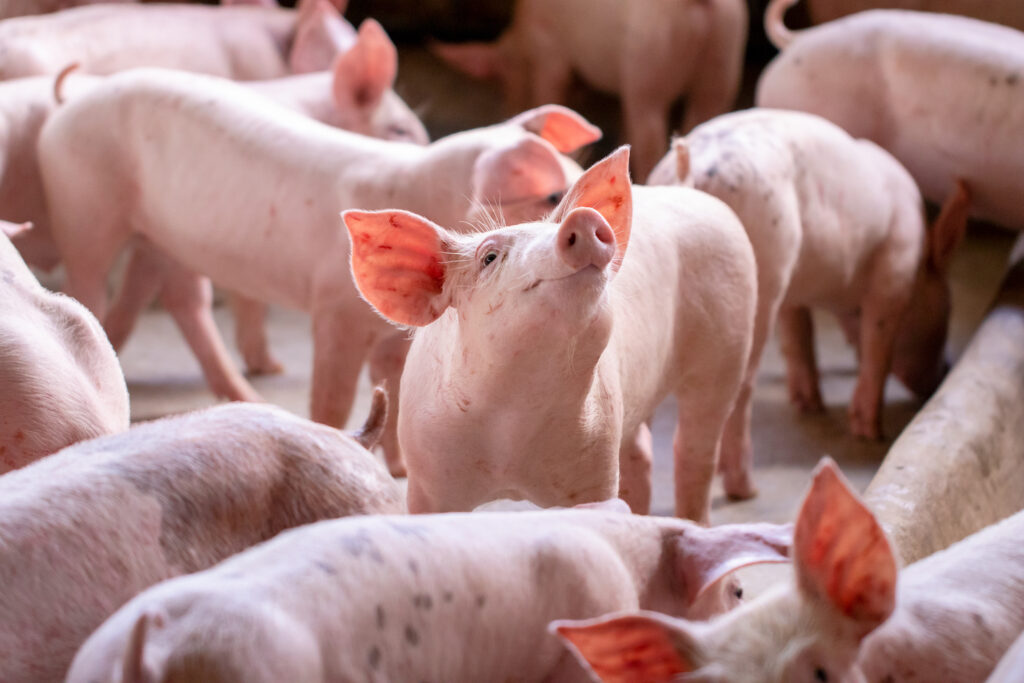Pig producers could have access to zinc oxide longer than expected
13th January 2022
The National Pig Association has welcomed an announcement from the Veterinary Medicines Directorate but stressed that the industry must continue preparations for a future without zinc oxide products.

Following discussions with the pig sector, the VMD has agreed that zinc oxide products that are in the supply chain by 26th June 2022, can continue to be used until the end of their shelf life.
This effectively means pig producers can continue to use zinc oxide for up to two years beyond June 2022, subject to availability.
Marketing authorisations of veterinary medicines containing zinc oxide for oral administration for food producing animals will be withdrawn at EU level on 26th June 2022. This forms part of retained EU law and is therefore part of UK law.
“Together with the pig sector, we have been working to explore how withdrawal of these MAs can be implemented in a way that does not lead to an increase in antibiotic use or a decrease in the health and welfare of weaned piglets,” the VMD continued.
“We recognise the hard work and progress the pig sector has already made to prepare for the withdrawal of the MAs.”
“Good news for the sector”
NPA chief executive Zoe Davies welcomed the VMD’s statement, which she said will give the pig sector much-needed breathing space beyond June 2022.
“This is good news for the pig sector and will help some businesses that might struggle to cope without zinc oxide in piglet feed,” Zoe said.
“The key point is that the VMD have stressed that there is no blanket ban on zinc oxide – but a withdrawal of the market authorisation for existing products containing it, which is a very subtle but important shift in interpretation of the rules.”
However, there are no guarantees about how much zinc oxide will be available to pig producers post-June.
“The full impact of this will depend on the volume of orders feed companies put in over the next few weeks – there is no guarantee at this stage that there will be enough for all producers in stock until 2024,” Zoe added.
“The VMD has made it clear, however, that the industry should only use zinc oxide where current tools have not been sufficient to control post-weaning diarrhoea on farm, so our advice is very much for all parts of the supply chain to continue preparing for life beyond zinc where possible.”
The VMD left the door open to new products containing zinc oxide to be authorised, provided they meet the criteria and pass the environmental impact modelling – however, this concept still needs to be explored with manufacturers, NPA said.
Use the run-out period wisely
The Pig Veterinary Society also welcomed the “pragmatic approach” the VMD has taken.
Senior vice-president Paul Thompson said: “PVS recognises that while some farms have been successful in trials to remove zinc from their rations, there are others where dietary and hygiene interventions have been ineffective which compromises pig welfare and risks use of more therapeutic antibiotic treatment.”
PVS is strongly encouraging its members to use the run-out period to continue exploring alternative options. Although it is possible a new MA could be applied for, “this is by no means a given”, Mr Thompson added.
“In the immediate term there is now a very narrow window to bring product into the UK and clear quality control as lead times on the product are considerable. Feed companies are going to have to commit to a quantity and agree commercial terms for payment by end of January.”
He urged vets to respond rapidly when asked by mills or clients as to how they see their prescribing pattern for next two years.
The Allied Industries Confederation (AIC) has asked its members to carry out distribution of available zinc oxide stocks “in a fair and equitable manner in order to best serve the interests of the wider industry”.
The statement added: “AIC will continue to encourage members and their FAR registered feed advisers to work with their pig producer customers and prescribing vets to help the transition away from Zinc Oxide at the earliest opportunity so that diminishing supplies remain available for those pig producers where the use of Zinc Oxide remains essential for a slightly longer period,” it said.
